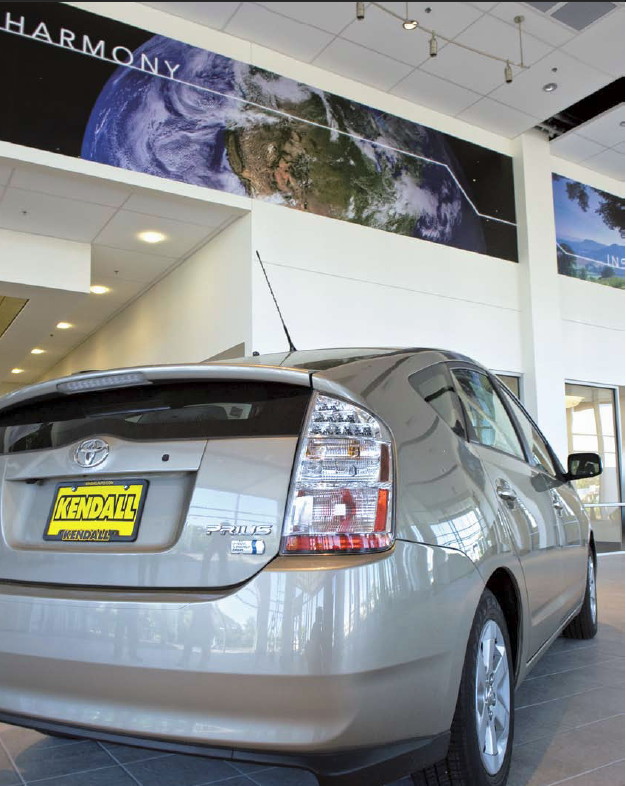For automakers, being green can extend well beyond the vehicles themselves. This week, hybrid pioneers Toyota and Honda each showed off new infrastructure projects that burnish their green credentials beyond well beyond the vehicles they sell.
Honda started producing hydrogen to power its fuel-cell FCX Clarity vehicles from its latest Solar Hydrogen Station prototype, located at its Los Angeles R&D Center. The hydrogen fuel cell in the Honda FCX Clarity generates electricity for the electric motor that powers the car.

Kendall Toyota - Eugene, OR - First LEED Platinum dealership facility

Kendall Toyota - Eugene, OR - First LEED Platinum dealership facility

Kendall Toyota - Eugene, OR - First LEED Platinum dealership facility
Solar-powered commuting?
The solar-powered system produces 0.5 kg (1.1 pounds) of hydrogen to fill an FCX Clarity overnight in 8 hours, which Honda says is enough for 10,000 miles per year of daily commuting.
This is the latest and most efficient of several generations of solar hydrogen stations Honda has tested since 2001.
The new system is the first designed for home use that eliminates a separate compressor, making it both smaller and 25 percent more efficient than the previous solar hydrogen system it replaces. It doesn't store hydrogen, but produces and refills the car directly.
Solar power to and from the grid
The system can run on solar power, grid electricity, or a mix of both. During daytime peak power-demand hours, it can generate and export electricity to the grid, and then use cheaper off-peak power at night to generate the hydrogen, saving cash for the consumer.
Honda also says it produces less carbon dioxide than before; CO2 is a byproduct of splitting apart natural gas to extract hydrogen.
Platinum LEED dealership
Also this week, a Toyota dealer in Eugene, Oregon, became the world's very first certified LEED Platinum auto dealership, and only the fifth Toyota retailer that can claim any kind of LEED certification.
The Leadership in Energy and Environmental Design (LEED) rating system and standards are administered by the U.S. Green Building Council, covering everything from energy efficiency and water use to the construction materials and even the site selection. The highest LEED certifications are hard to get, and avidly sought by building owners to demonstrate their commitment to green practices.
The new, 59.000-square-foot Kendall Toyota facility includes a 200-kilowatt solar array on the roof is expected to generate one-third of its annual electricity needs.
Cost savings = three Prius hybrids
Other features include extra insulation, recycled post-consumer materials used for construction, automatic light switches, and service-bay doors that close automatically to reduce heating and cooling expenses.
Specially designed plumbing will save roughly 130,000 gallons of fresh water a year, and the drought-tolerant landscaping is irrigated entirely with captured rainwater.
Altogether, these features are expected to cut the dealership's annual energy bill by $70,000--or roughly the cost of three low-spec 2010 Toyota Prius hybrid hatchbacks.
[Honda, Kendall Toyota via TheCarConnection]













